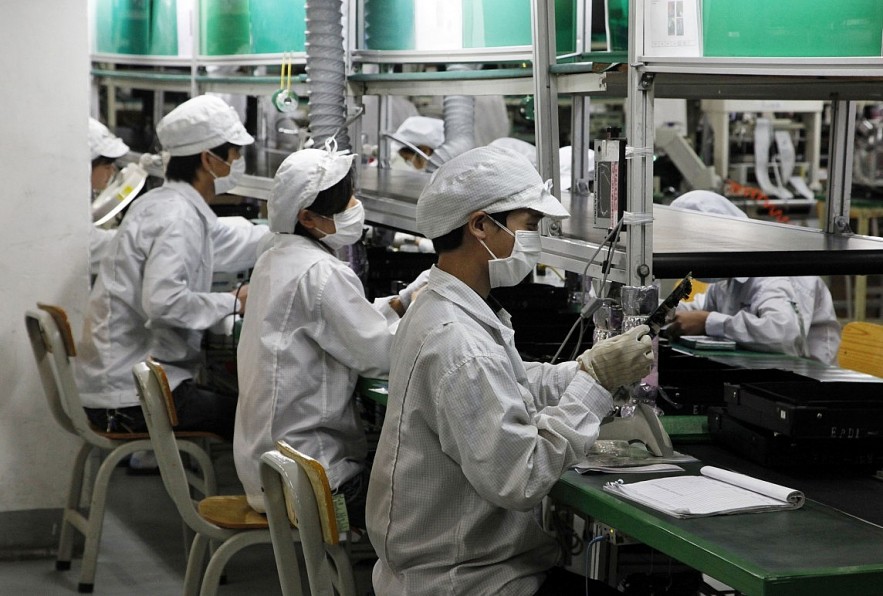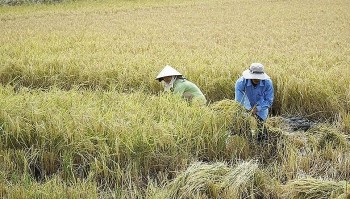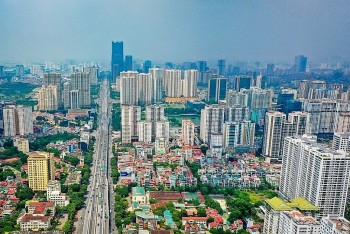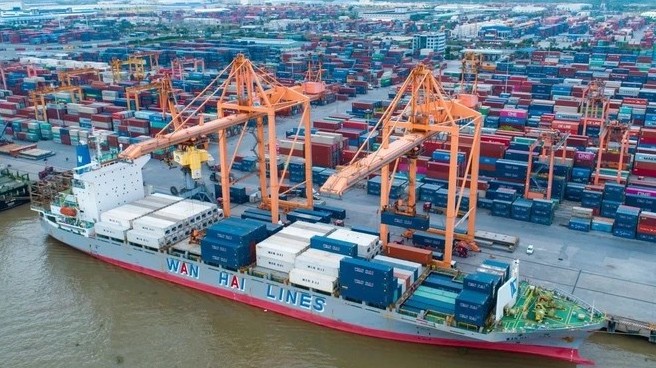World Bank: Vietnam Needs to Diversify Its Export Industry
 |
| Inside the car factory in South Korea. Photo: SeongJoon Cho, Bloomberg. |
According to a recent report by the World Bank and the Ministry of Economy and Finance, Republic of Korea (RoK), the Vietnamese economy is growing as rapidly as the RoK's economy during its period of strong growth in the 80s.
Although both have had outstanding growth in a short period, the Vietnamese economy is facing many risks that may affect future growth. Therefore, researchers recommend that Vietnam needs to diversify and complicate export products, creating a premise for sustainable growth in the future.
Vietnamese and RoK economies
South Korea is one of the few countries to successfully transition from a low-income economy to a high-income economy in a short period of time. According to experts, this rapid industrialization is the result of decades of investment in facilities and people, as well as export promotion policies from the RoK's government.
After South Korea became a developed market economy and joined the Organization for Economic Cooperation and Development (OECD) in 1996, the RoK's government shifted its focus to economic growth, linked to productivity growth based on technological progress.
By the early 21st century, South Korea's economic growth was driven by the government's efforts to upgrade and research technology in the manufacturing sector, leading to rapid growth in labor productivity.
RoK's rapid economic development is also associated with the diversification of export products, from simple to complex, from rudimentary to high-tech.
While many developing countries focused on exporting simple commodities such as agriculture or minerals, South Korea expanded production in the 1970s. From exporting raw materials and agricultural products in the 1960s, to chemicals, shipbuilding materials and garments in the 1980s, South Korea is now producing high-value items such as microchips, automobiles and components.
Similar to South Korea, from 1990 to 2022, Vietnam's GDP per capita has grown rapidly, with an average annual rate of 5.4%.
According to the World Bank, this outstanding achievement is made up of three main factors including the ability to accumulate capital quickly, abundant labor resources, and high productivity growth.
In addition, economic growth is also reinforced by reforms in the business environment, growth in human resource quality, and especially large FDI capital flows.
Like South Korea, Vietnam also expanded its export product portfolio from simple, low value-added to complex, high-value-added products. While Vietnam's exports in 1995 focused on minerals, agriculture, and textiles, Vietnam's top exports in 2023 were electronics (computers, phones, components), machinery, and textiles.
However, diversification in Vietnam is being promoted by FDI enterprises. This leads to some production advances having little opportunity to be shared with other domestic businesses.
Furthermore, the production of complex items such as electronics and machinery is only focused on the assembly stage, with little investment in product processing and completion. According to researchers, these two factors are hindering Vietnam's potential to diversify its economy in the future.
 |
| Assembly line at a factory belonging to Foxconn Group in Ha Tinh. Photo: Qilai Shen, Bloomberg. |
Recommendations for Vietnam to promote diversification
According to the World Bank report, researchers have made a number of policy recommendations to diversify Vietnam's economy, as well as contribute to minimizing future risks.
Vietnam needs to identify the most suitable industry groups to improve the prospects of diversifying the economy. The report shows that Vietnam has the potential to diversify more than 200 products, of which 92 new products are complex technology items. This transformation is completely consistent with Vietnam's strategic goal of enhancing the value chain in the global market.
Vietnam will need to invest more heavily in upgrading technology and capacity to diversify its economy. Based on experience from South Korea, Vietnam's private sector can increase investment in technology research and development activities as well as strengthen capacity building for the workforce.
Vietnam also needs to strengthen coordination between industrial and innovation policies.
Effective coordination between industrial and innovation policies can encourage local enterprises to invest in research and upgrade technological capabilities, thereby enhancing competitiveness.
 | First Agreement On Emission Reduction Successfully Implemented in Vietnam This is the first agreement on emission reduction to be successfully implemented in Vietnam, cited VNS, with a total of US $41 million in carbon ... |
 | WB-Funded Project Makes Positive Impact on Soc Trang's Rice Industry The Vietnam Sustainable Agriculture Transformation (VnSAT) project has contributed to shaping Soc Trang province's further vision in synchronous solutions to improve the competitiveness of local ... |
 | World Bank Retains 2024 Growth Forecast For Vietnam At 5.5% In the East Asia and Pacific Economic Update, titled "Solid Foundation for Growth" published on April 1 by the World Bank (WB), this organization forecasts ... |


